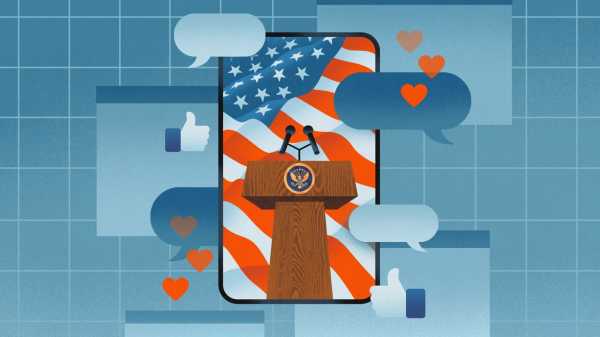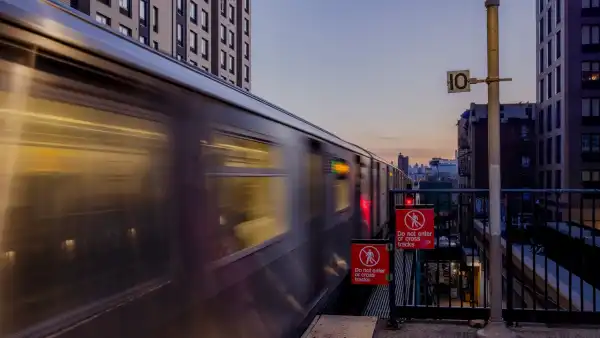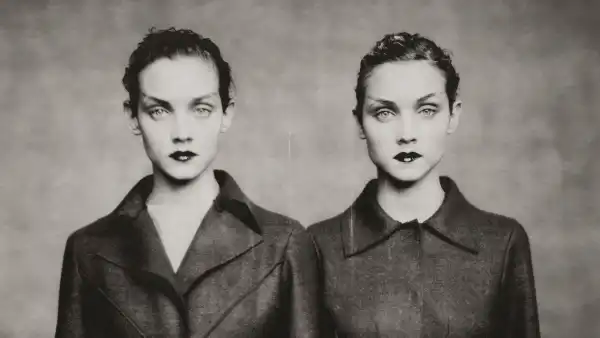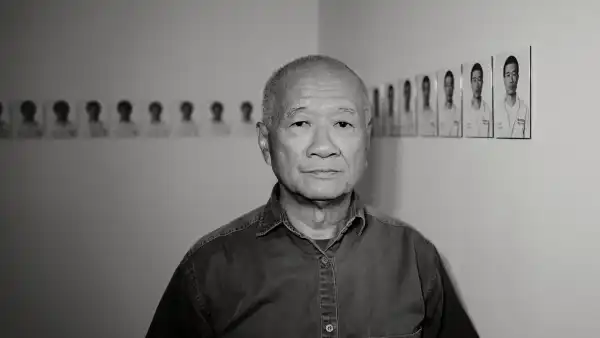
Save this storySave this storySave this storySave this story
This past week, the Presidential campaigns of Donald Trump and Kamala Harris played out online, side by side, as if in split screen. Last Monday, after a delay of more than half an hour due to technical difficulties, Trump participated in a glitchy two-hour-long conversation with Elon Musk that was live-streamed on X, formerly Twitter, a platform that Musk owns and has turned into his personal pulpit. Behind-the-scenes photos showed Trump hunched over an iPhone, lacking even a microphone, in a Mar-a-Lago meeting room decorated with a flattering painting of himself. Musk trumpeted that the event had nearly a billion views, but, according to the Times, listenership peaked at around seven hundred thousand, and statistics from the Web-analytics firm Similarweb suggest it added only five per cent to X’s normal traffic. In contrast to the meandering live stream, which resembled a relic from the pandemic-era chat app Clubhouse, Harris’s @KamalaHQ TikTok account was posting daily videos in the Internet’s meme-based vernacular, netting many millions of views. If you don’t understand why clips of the newly named Vice-Presidential candidate Tim Walz were set to a voice-over from the reality show “Love Island” announcing, “This week, a hot new bombshell enters the villa,” well, you might not be online enough.
The divide between the two campaigns’ online presences comes down to content versus form. The Trump team has always drawn many of its ideas from the darker corners of the Internet (for one recent example, see J. D. Vance’s misogynistic obsession with “childless cat ladies”), but the emerging Harris campaign, all of a month old, has found a different kind of traction by embracing the Web’s native formats. Watching its use of popular TikTok sounds—such as Lady Gaga saying during an interview, “No sleep, bus, club, another club . . .” over a montage of Harris-Walz tour stops—feels a bit like hearing parents use their children’s high-school slang. But it has proved remarkably effective at connecting with the app’s users. According to the Harris-Walz campaign, its TikTok team is made up of five staffers all under the age of twenty-five; the same team had been working for Joe Biden’s reëlection, but the tone since the transition has become strikingly loose. The campaign has been responsive to what is trending day to day on the platform, creating a kind of call-and-response between itself and Harris fans. In addition to @KamalaHQ, which was renamed from @BidenHQ, the team recently made a personal account for Harris, something that Biden never maintained. Over the weekend, Walz also got his own TikTok account, launching with a very casual video alongside his rescue pooch Scout. Canine friends are a good bet on social media. (Trump, unfortunately, has been reported to suffer from “anti-dog prejudice.”)
Figuring out how to approach relatively untested media platforms has always been a challenge for political candidates. I talked to Laura Olin, a digital strategist who was the social-media director of Barack Obama’s 2012 reëlection campaign. Twitter had already proved to be a potent force in politics in 2008, but, by the end of Obama’s first term, newer, more multimedia online platforms had emerged, placing even greater importance on a candidate’s image. Olin brought Obama’s campaign onto Instagram, posting in real time from events, with the odd Throwback Thursday, per the trend of users sharing vintage photos. “No one in the communications department understood what we were doing, but it seemed riskier to not try anything at all,” Olin recalled. “We were on Google+ for a while, which is hilarious,” she added, referring to Google’s failed attempt at a Facebook-style social network. At the time, Obama was not polling well with young voters, and social media was where to find them. “We were trying to reach people where they were increasingly spending their time,” she said. TikTok is today’s equivalent: according to a 2023 Pew survey, a third of U.S. adults under age thirty consume some amount of news on the platform.
Olin sees the Harris-Walz campaign deploying its online-ness to make itself heard in an Internet landscape that’s far more crowded than it was a decade ago. “There’s way more noise. It’s harder to break through. It’s not worth saying anything unless it’s going to get traction by being funny or smart or standout in some way,” Olin said. She continued, “Campaigns can’t get away with being boring anymore.” Humor is the currency of the Internet, as is the ability to signal that you’re in on the joke. Dry policy messaging or warnings about threats to democracy are less likely to be widely shared than a good roast, as Walz discovered a month ago when he changed Democrats’ political strategy wholesale by labelling Trump and Vance “weird.” The Harris campaign has an account on Trump’s social-media platform Truth Social, where it follows only one account—Trump’s. It could have spent time disputing misinformation or trying to convert Trump-skeptical Republicans on Trump’s own turf. Instead, the Harris account has opted for mocking its opponent. When Trump complained that Harris was getting too much credit for the size of her crowds, Harris’s Truth Social account posted photos from the two candidates’ Philadelphia rallies in the same arena side by side. (suggesting, of course, that hers was indeed larger). Such dunks, as Internet slang would put it, are primed to be shared gleefully beyond Truth Social, a performance directed at the whole of social media.
Harris and Walz, at fifty-nine and sixty, respectively, are a good deal older than your average online content creator. But they are still decades younger than Trump or Biden, which makes them better suited to the art of posting, particularly at a moment when social media increasingly requires up-close faces and voices. Twitter once provided Trump a direct outlet for his every thought; his relentless presence online was one element of what made his Administration so nerve-jangling. Social media today is more broadcast-driven—conversation is less important—yet Trump, the former TV star, lacks the ability to project the necessary intimacy through a tiny screen. Successful influencers disclose their vulnerabilities, and allow viewers to access their personal lives, or at least semblances thereof. Trump, never the most introspective, has little self to disclose, and his preoccupations aren’t terribly relatable. (Who among us hasn’t tried to overturn a democratic election?)
Acting as the underdogs, Harris and Walz are documenting their way through what they’ve presented online as a righteous, pavement-pounding quest. After his first week of campaigning, Walz posted a diaristic front-facing-phone-camera video on X narrating how quickly he has become swept up in the experience of running for Vice-President. He comes across as direct and genuine. David Hogg, the Gen Z political activist, pointed out to me that Walz endured the scrutiny of high-school students during his decades as a teacher in Minneapolis—an experience that may have given him an advantage when it comes to presenting himself online. “They will tell you if you’re being weird. If something’s off, they will make fun of you in a way that hurts,” Hogg said, of teens. For better or worse, when trying to appeal to an audience that has just recently come of voting age, a familiarity with digital spaces might be worth more than policy messaging. Hogg told me, “Young people, especially, vote off of vibes.”
The candidates navigate a fine line on the Internet between relevant and cringe; there’s such a thing as trying too hard to speak the language or get a laugh. Though Harris’s Presidential campaign may be short by political standards, a few months is an eternity on social media. Some of the posts being made now will make little sense in the future. @KamalaHQ’s TikTok slide show of “photos of Tim Walz with increasing aura”—Internet slang for visible charisma—is ephemeral by design. But the moment is what matters. The Harris-Walz campaign recently announced a budget of two hundred million dollars for digital advertising through November, a figure it claims will constitute the largest digital ad campaign in U.S. political history. At the D.N.C. this week, the campaign is featuring social-media influencers onstage and providing a new V.I.P. box for digital-content creators. As Election Day approaches, we are seeing a pivot in the campaign’s messaging toward serious issues, but the memes have laid the groundwork for engagement—which, in politics as on social media, is the only winning currency. On Harris’s personal TikTok, the team is now sharing her pronouncements on grocery price gouging and “Trump abortion bans.” The latter post got just as many likes as any meme. ♦
Sourse: newyorker.com







